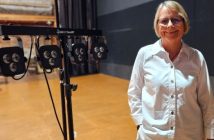Five years ago, Binsar Farms in India’s first sale of milk was just six litres. It is now selling 6000 litres each day and expects that number to double within two years.
The farm, a New Zealand-India collaborative venture in the state of Haryana, is well positioned to ride the enormous, rapid changes taking place in India.
The key, according to Binsar Farms chairperson Earl Rattray, is starting small and taking the long view.
Rattray, who is a leading figure in the New Zealand dairy industry, told an Institute of Directors meeting in Hamilton he sees the farm, on the edge of Delhi National Capital region, as an inter-generational project.
He presented on the challenges and opportunities of operating in India alongside Binsar
Farms chief executive Pankaj Navani, a computer engineer turned farmer who has worked for IT multinationals including Dell, as well as consulting.
“From my perspective, India is an emerging superpower,” Rattray told their audience. “It’s a country that’s full of young educated people, a fifth of the world’s consumers are going to live there, but patience is definitely needed.”
The numbers are, as he said, seductive: half the population is under 25 years old, and it is the world’s seventh largest economy.
“All countries go through an evolutionary process and India is going through it at pace,” he said.
“Over the next 25 years it will become the world’s largest population, the third largest economy in nominal GDP, there will be 300 million more people in cities.
“This economy is transitioning very, very quickly from informal to formal.
“The dairy sector is also transitioning from informal to formal, and that’s the basis of our strategy.”
He said India is the world’s biggest dairy producing nation, producing about 180 billion litres of milk to New Zealand’s 21 billion, Europe’s 160 billion, and the US’s 100 billion.
“This is the epicentre of the global dairy industry.”

Linda Rademaker and Stuart Anderson
Rattray said there were useful similarities between the two countries when it came to doing business, including the use of English and a very similar legal system. “You’ve got those universal values of civil society, a free press, a very developed democratic process, an independent judiciary, respect for property rights.”
And cricket. “They love beating Australia in cricket.”
But there are also barriers. Indian enterprises are overwhelmingly micro-businesses which struggle to grow, with factors including tightness of liquidity thanks to a banking system more intent on gaining deposits than on lending.
“For companies like ours, because we’re a small company, a growing one but small, exceptional cashflow planning is very, very important, and financing a business with equity rather than debt is important.”
Other barriers include a complex bureaucracy and the prevalence of founding owners’ reluctant to give up any control.
In response, Binsar Farms started modestly. “I feel very comfortable our approach has been to think small and to act small,” Rattray said. “We deliberately put developing culture before strategy because it’s no use having a strategy if you can’t execute it. Building that capability to execute it has been our priority.”
They were initially going to deliver to a dairy factory, but, as Navani remarked, when the factory took holidays, the cows didn’t understand. That led to them supplying neighbourhoods directly, and then also selling in nearby New Delhi. Each morning, trucks take milk to five hubs in the city, from where milk boys – often students – deliver it to households, picking up empties for recycling as they do.
“My partners, in particular, really embraced the concept of welfare of the people that work for us and that supply the services to us,” Rattray said.
“This is a small venture but helping so many people,” Navani said.
That includes a nearby government-run school for children from poor backgrounds, which had a high truancy rate. Binsar Farms had a surplus one Monday and decided to take it to the school for the pupils. It was well received, so they started repeating it on Mondays and then rolling it out every day, with attendance rates rocketing.
“It’s hugely satisfying,” Rattray said.
In the early days, they also ran regular medical clinics attached to the farm. “That’s been quite helpful as well. We started to build trust between our business and the community, and I think we’ve got a very, very supportive local community.”



